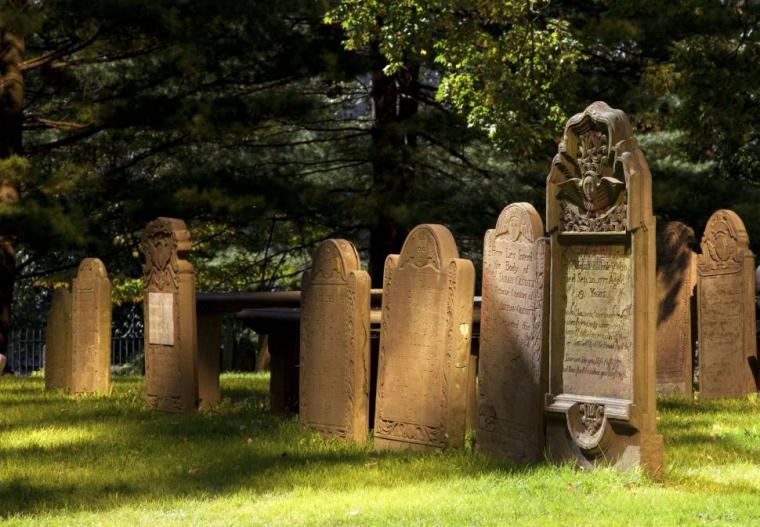
“Translating Tombstones: Eternal Memorials & Their Meaning" at the German American Heritage Center -- May 26.
Sunday, May 26, 2 p.m.
German American Heritage Center, 712 West Second Street, Davenport IA
What does a hand pointing on a gravestone mean? Does an anchor mean someone was a sailor? On May 26, patrons of Davenport's German American Heritage Museum are invited to learn what the different symbols on gravestones mean during this lively "Kaffee und Kuchen" program Translating Tombstones: Eternal Memorials & Their Meaning, which finds Minda Powers-Douglas explaining common and uncommon symbols and helping participants understand the special language of tombstones.
Gravestones and tombstones may be simple upright slabs with semi-circular, rounded, gabled, pointed-arched, pedimental, square or other shaped tops. During the 18th century, they were often decorated with memento mori (symbolic reminders of death) such as skulls or winged skulls, winged cherub heads, heavenly crowns, or the picks and shovels of the gravedigger. Somewhat unusual were more elaborate allegorical figures, such as Old Father Time, or emblems of trade or status, or even some event from the life of the deceased (particularly how they died). Large tomb chests, false sarcophagi as the actual remains were in the earth below, or smaller coped chests were commonly used by the gentry as a means of commemorating a number of members of the same family.
In the 19th century, headstone styles became very diverse, ranging from plain to highly decorated, and often using crosses on a base or other shapes differing from the traditional slab. By this time, popular designs were shifting from symbols of death like Winged heads and Skulls to Urns and Willow trees. Marble also became overwhelmingly popular as a grave material during the 1800s in the United States. More elaborately carved markers, such as crosses or angels also became popular during this time. Simple curb surrounds, sometimes filled with glass chippings, were popular during the mid-20th century. Islamic headstones, meanwhile, are traditionally more a rectangular upright shaft, often topped with a carved topknot symbolic of a turban; but in Western countries more local styles are often used.
Some form of simple decoration may be employed, with special emblems on tombstones indicating several familiar themes in many faiths. At the German American Heritage Center's latest "Kaffee und Kuchen" event, many of these emblems and symbols will be explored by Minda Powers-Douglas, an author and lecturer on historical cemeteries and gravestone symbolism. She is the founder and editor of TheCemeteryClub.com and Epitaphs Magazine, and enjoys speaking at cemetery events and doing her part to keeping our cemeteries “alive.” Powers-Douglas received her Bachelor of Arts degree in English and Theatre from Rock Island's Augustana College and is a native of Moline.
Translating Tombstones: Eternal Memorials & Their Meaning will be presented at the German American Heritage Center on May 26, with the 2 p.m. “Kaffee und Kuchen” program preceded by coffee and cake at 1:30 p.m. Admission is free for Heritage Center members and $5 for non-members, and more information and reservations are available by calling (563)322-8844 and visiting GAHC.org.








